 W
WThe 6th Battalion, Royal Welch Fusiliers, was a Welsh unit of the British Army's auxiliary forces. Formed in 1908, from Volunteer units that dated back to 1860, it fought at Gallipoli), in Egypt and Palestine during World War I, and in the campaign in North West Europe during World War II. Postwar it was converted to the anti-aircraft artillery role, then reverted to infantry in 1956 after it amalgamated with a neighbouring unit.
 W
WThe 1st Minnesota Cavalry Regiment, also known as the Mounted Rangers, was a Minnesota USV cavalry regiment that served in the Union Army during the American Civil War.
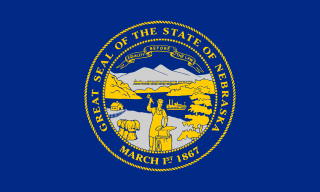 W
WThe 1st Nebraska Infantry Regiment was an infantry regiment that served in the Union Army during the American Civil War. It was initially organized to protect the Nebraska Territory from Indian attacks, but primarily served in the Western Theater before being reorganized and sent to the frontier.
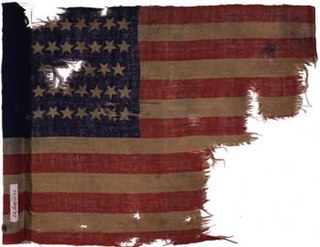 W
WThe 1st New York Infantry Regiment was an infantry regiment that served in the Union Army during the American Civil War.
 W
WThe 1st New York Light Artillery Battalion was a New York State volunteer artillery unit that served in the Union Army during the American Civil War. The unit was initially composed of four artillery companies, which were mustered-in for service in late 1861. Throughout 1862 and early 1863, the battalion saw action in the Eastern Theater before it was reorganized into four independent batteries of the New York Light Artillery, which fought separately for the remainder of the war.
 W
WThe 2nd Maine Infantry Regiment was a Union Army unit during the American Civil War. It was mustered in Bangor, Maine, for two years' service on May 28, 1861, and mustered out in the same place on June 9, 1863.
 W
WThe 2nd Nebraska Cavalry Regiment was a cavalry regiment that served in the Union Army during the American Civil War.
 W
WThe 2nd New York Infantry Regiment was an infantry regiment that served in the Union Army during the American Civil War. It is also known as the Troy Regiment.
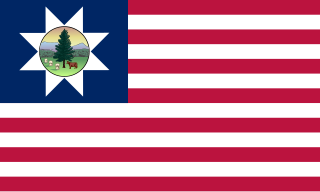 W
WThe 2nd Vermont Brigade was an infantry brigade in the Union Army of the Potomac during the American Civil War.
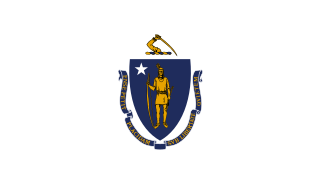 W
WThe 3rd Massachusetts Volunteer Militia Regiment was a peacetime regiment of infantry that was activated for federal service in the Union Army for two separate tours during the American Civil War. The regiment consisted of companies from Plymouth and Bristol Counties.
 W
WThe 3rd New York Infantry Regiment was an infantry regiment that served in the Union Army during the American Civil War. It is also known as the Albany Regiment. They wore an americanized zouave uniform which consisted of a dark blue zouave jacket with red trimming, dark blue pantaloons, white gaiters, red fez with a blue tazzle, and a dark blue zouave vest with a red trimming.
 W
W266 Battery Royal Artillery is a Royal Artillery unit of the British Army Reserve. It was first formed in Bristol in 1859 and served through World War I as field artillery and World War II as anti-aircraft (AA) artillery.
 W
WThe 4th Regiment Massachusetts Volunteer Militia, sometimes known as the 4th Massachusetts Infantry, was a peacetime regiment of infantry that was activated for federal service in the Union Army for two separate tours during the American Civil War. Most of the companies were from Norfolk County, Massachusetts. The regiment had its headquarters in Quincy, Massachusetts.
 W
WThe 4th New York Infantry Regiment was an infantry regiment that served in the Union Army during the American Civil War. It is also known as the 1st Scott's Life Guard.
 W
WThe 5th Missouri Infantry Regiment was an infantry regiment that served in the Confederate States Army during the American Civil War. The regiment entered into service on September 1, 1862, when the elements of two preceding battalions were combined. Many of the men entering the regiment had seen service with the secessionist Missouri State Guard. James McCown was the regiment's first colonel. After playing a minor role at the Battle of Iuka on September 19th, the regiment then fought in the Second Battle of Corinth on October 3rd and 4th. After being only lightly engaged on the 3rd, the regiment charged the Union lines on the 4th, capturing a fortification known as Battery Powell. However, Union reinforcements counterattacked and drove the regiment from the field. In early 1863, the regiment was transferred to Grand Gulf, Mississippi, where it built fortifications. The unit spent part of April operating in Louisiana, before again crossing the Mississippi River to return to Grand Gulf.
 W
WThe 5th New York Infantry Regiment, also known as "Duryée's Zouaves", was a volunteer infantry regiment of the Union Army, during the American Civil War, led by Colonel Abram Duryée. Modeled, like other Union and Confederate infantry regiments, on the French Zouaves of Crimean War fame, its tactics and uniforms were different from those of the standard infantry.
 W
WThe 6th Missouri Infantry was an infantry regiment of the Confederate States Army during the American Civil War. The regiment was formed on August 26, 1862, when two existing units were combined. Later that year, the regiment was then lightly engaged at the Battle of Iuka and saw heavy action at the Second Battle of Corinth. In 1863, the regiment was engaged at the Battle of Port Gibson, and was part of a major charge at the Battle of Champion Hill. After a defeat at the Battle of Big Black River Bridge, the regiment took part in the siege of Vicksburg, where it saw heavy fighting. The siege of Vicksburg ended on July 4th with a Confederate surrender; after being exchanged, the regiment combined with the 2nd Missouri Infantry to form the 2nd and 6th Missouri Infantry (Consolidated). The 6th Missouri Infantry ceased to exist as a separate unit.
 W
WThe 6th New York Infantry Regiment, also called "Wilson's Zouaves", was a unit of the Union Army during the American Civil War. It was organized at New York City on May 25, 1861. The Regiment was composed of 5 initial companies of A, B, C, and D. Companies E, F, G, H, I, and K were added May 25, 1861. It was made up primarily of gang members, ex-cons, and criminals from the Bowery section of New York City. Rumor had it that a man had to prove he'd served time in jail before he was allowed to join.
 W
WThe 7th New York Infantry Regiment was an infantry regiment that served in the Union Army during the American Civil War. It was composed almost entirely of German immigrants and is also known as the Steuben Guard or the Steuben Regiment. It should not be confused with the 7th New York Militia, an entirely different regiment whose service overlapped with the 7th New York Volunteers.
 W
WThe 9th Regiment Illinois Volunteer Infantry was an infantry regiment that served in the Union Army during the American Civil War.
 W
WThe 9th New York Infantry Regiment was an infantry regiment that served in the Union Army during the American Civil War. It was also known as the "Hawkins' Zouaves" or "New York Zouaves."
 W
WThe 10th Maine Infantry Regiment was mustered in for two years of service at Portland, Maine, on October 4, 1861, by then-Major Seth Eastman. It was mustered out on May 8, 1863, also at Portland. The regimental commander was Colonel George Lafayette Beal. The 10th Maine was a re-organization of the 1st Maine Infantry, a regiment primarily composed of men with two-year enlistments that was mustering out after completing three months of Federal service. Eight companies of the 1st Maine were retained in service, with Companies A and D replaced by newly recruited companies.
 W
WThe 1st Lancashire Artillery Volunteers, popularly known as 'Brown's Corps', was an auxiliary unit of the British Army raised in Liverpool in 1859. As the Lancashire & Cheshire Royal Garrison Artillery in the Territorial Force it was responsible for defending the Mersey Estuary and the coastline of North West England. It was one of the few coast defence units to fire a shot during World War I but also provided personnel for a number of siege batteries that saw action on the Western Front. It continued in the coast defence role during World War II, at the end of which it sent troops to work in the rear areas in Europe. It was reformed postwar but was broken up when the coast artillery branch was abolished in 1956.
 W
WThe 13th New York Infantry Regiment was an infantry regiment in the Union Army during the American Civil War.
 W
WThe 17th New York Infantry Regiment was an infantry regiment in the Union Army during the American Civil War.
 W
WThe 1st Norfolk Artillery Volunteers was a unit of Britain's Volunteer Force raised in the County of Norfolk in 1859 as a response to a French invasion threat. It became part of the Territorial Force in 1908 and served under various designations as field artillery in Palestine during World War I, and as heavy anti-aircraft artillery in North Africa and Italy during World War II. It disappeared in a merger in 1955.
 W
WThe 5th Battalion, King's Regiment (Liverpool) was a volunteer unit of the King's Regiment (Liverpool) of the British Army, part of the Territorial Force (TF).
 W
WThe 22nd New Jersey Infantry Regiment was an infantry regiment in the Union Army during the American Civil War.
 W
WThe 23rd New York Infantry Regiment, the "Southern Tier Regiment", was an infantry regiment of the Union Army during the American Civil War.
 W
WThe 26th New York Infantry Regiment, the "2nd Oneida Regiment", was an infantry regiment that served in the Union Army during the American Civil War.
 W
WThe 27th Maine Infantry Regiment was a nine-month regiment raised for service in the Union Army during the American Civil War.
 W
WThe 27th New York Infantry Regiment was an infantry regiment formed in Elmira, New York, to fight and defend the United States during the American Civil War. The regiment was also known as the "Union Regiment".
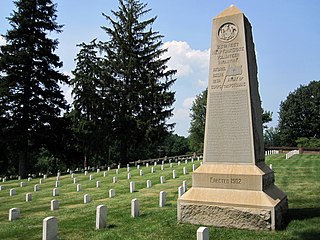 W
WThe 28th New York Infantry Regiment, the "Niagara Rifles" or "Scott Life Guard", was an infantry regiment that served in the Union Army during the American Civil War.
 W
WThe 31st New York Infantry Regiment, "Baxter's Light Guard" or the "Montezuma Regiment", was an infantry regiment that served in the Union Army during the American Civil War.
 W
WThe 41st New York Infantry Regiment was an infantry regiment that served in the American Civil War. They were nicknamed Dekalbs Regiment. The regiment was formed from German immigrants from both New York and Pennsylvania. Initially, the regiment wore a uniform that was based on the Jaeger uniform of Germany. It consisted of a dark green frock coat with red trimming and cuff flaps, dark green pants with a red stripe down the leg, a dark green kepi with a red band, and black shoes. In addition to the Jaeger uniform, Company K of the regiment wore a French/American zouave uniform. This uniform consisted of a dark blue zouave jacket with red trimmings, dark blue pantaloons with red braiding, a sky blue sash, a dark blue zouave vest with red trimming, a red tasseled fez with a thin yellow band around it, and white gaiters.
 W
WThe 43rd Regiment Massachusetts Volunteer Infantry was a regiment of infantry that served in the Union Army during the American Civil War. The unit was first formed in September 1862 in response to President Abraham Lincoln's call for 300,000 men to serve for nine months. The nucleus of the regiment was the Second Battalion Massachusetts Volunteer Militia, a unit dating to 1798 known as the Boston Light Infantry and nicknamed the "Tigers." The 43rd Massachusetts therefore became known as the "Tiger Regiment."
 W
WThe 44th Regiment Massachusetts Volunteer Infantry was a regiment of infantry that served in the Union Army during the American Civil War. Its nucleus was the 4th Battalion Massachusetts Volunteer Militia, known as the "New England Guards." An old state militia unit dating back to the Revolution, the 4th Battalion was called upon to serve garrison duty at Fort Independence shortly after the beginning of the Civil War. After President Abraham Lincoln's August 1862 call for 300,000 men to serve for nine months the 4th Battalion was given permission to recruit to a full regiment and to muster into federal service.
 W
W45th Regiment Massachusetts Volunteer Infantry was an infantry regiment in the Union army during the American Civil War. The regiment trained at Camp Meigs in Readville, Massachusetts before traveling to North Carolina, where they fought in the Battle of Kinston in December 1862, and in skirmishes in and around New Bern, North Carolina in the spring of 1863. They suffered heavy casualties in battle and due to fever. In June they returned to Boston, where they patrolled the streets to quell any draft riots, and were discharged on July 21. They were commanded by Colonel Charles R. Codman (1829-1918).
 W
WThe 46th Regiment Massachusetts Volunteer Infantry was a regiment of infantry that served in the Union Army during the American Civil War. Its members volunteered in answer to President Abraham Lincoln's August 1862 call for 300,000 men to serve for nine months. The regiment gathered in Springfield, Massachusetts and consisted almost entirely of men from Hampden County. The primary recruiter was Rev. George Bowler who soon became Colonel in command of the regiment.
 W
WThe 47th Massachusetts Infantry Regiment was a regiment of infantry that served in the Union Army during the American Civil War. It was one of the 18 Massachusetts regiments formed in response to President Abraham Lincoln's August 1862 call for 300,000 men to serve for nine months. The unit was known as the "Merchant's Guard Regiment" having been recruited primarily through the efforts of Boston merchant Lucius B. Marsh, who became the regiment's Colonel and commanding officer. The regiment's service was unusual in that it never saw combat as a full regiment. Two detached companies saw minor skirmishing without casualties. Instead of active combat duty, the regiment served guard and provost duty in various camps and fortifications in and about New Orleans, Louisiana.
 W
WThe 48th Regiment Massachusetts Volunteer Infantry was a regiment of infantry that served in the Union Army during the American Civil War. It was one of the 18 Massachusetts regiments formed in response to President Abraham Lincoln's August 1862 call for 300,000 men to serve for nine months. It consisted of a combination of Essex County companies and Irish-American companies which caused some delay and friction during the unit's formation. The regiment was assigned to the Department of the Gulf and saw heavy combat during the Siege of Port Hudson.
 W
WThe 49th Regiment Massachusetts Volunteer Infantry was a regiment of infantry that served in the Union Army during the American Civil War. It was one of the 18 Massachusetts regiments formed in response to President Abraham Lincoln's August 1862 call for 300,000 men to serve for nine months. The regiment was recruited in Berkshire County and rendezvoused for mustering in at Camp Briggs in Pittsfield, Massachusetts. William F. Bartlett, a veteran of the 20th Massachusetts was voted colonel in command of the regiment. The 49th Massachusetts was assigned to the Department of the Gulf and saw heavy combat during the Siege of Port Hudson.
 W
WThe 50th Regiment Massachusetts Volunteer Infantry was a regiment of infantry that served in the Union Army during the American Civil War. It was one of the 18 Massachusetts regiments formed in response to President Abraham Lincoln's August 1862 call for 300,000 men to serve for nine months. The regiment was recruited in Essex County and rendezvoused for mustering in at Camp Edwin M. Stanton in Boxford, Massachusetts. The 50th Massachusetts was assigned to the Department of the Gulf under Major General Nathaniel P. Banks and shipped for Louisiana. The regiment saw combat during the Siege of Port Hudson.
 W
WThe 51st Regiment Massachusetts Volunteer Infantry was a regiment of infantry that served in the Union Army during the American Civil War. The regiment was assigned to Major General John G. Foster's Department of North Carolina, later designated as the XVIII Corps. While based in New Bern, North Carolina, the 51st Massachusetts took part in several expeditions involving numerous units from Foster's command and were engaged in the Battle of Kinston, the Battle of White Hall and the Battle of Goldsboro Bridge, among other engagements.
 W
WThe 52nd Regiment Massachusetts Volunteer Infantry was a regiment of infantry that served in the Union Army during the American Civil War. It was one of the 18 Massachusetts regiments formed in response to President Abraham Lincoln's August 1862 call for 300,000 men to serve for nine months. The regiment was recruited in Franklin and Hampshire Counties and rendezvoused for mustering in at Camp Miller in Greenfield, Massachusetts. The 52nd Massachusetts was assigned to the Department of the Gulf under Major General Nathaniel P. Banks and shipped for Louisiana. The regiment participated in the Bayou Teche campaign in western Louisiana during April and May of 1863 and then saw combat during the Siege of Port Hudson.
 W
WThe 103rd Infantry Regiment was an infantry regiment of the United States Army that served in combat in the American Civil War, World War I, and World War II. It was an Army National Guard regiment from the states making up New England, but most of its soldiers came from Maine. It was a part of the 26th Infantry Division and the 43rd Infantry Division. The 103rd regiment fought in numerous battles before its deactivation after the Second World War.
 W
WThe 123rd Pennsylvania Volunteer Infantry was an infantry regiment that served in the Union Army during the American Civil War.
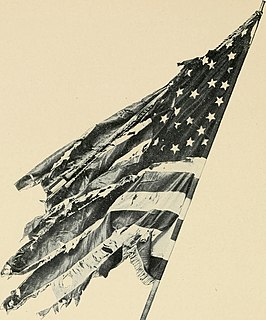 W
WThe 124th Pennsylvania Volunteer Infantry was an infantry regiment that served in the Union Army during the American Civil War.
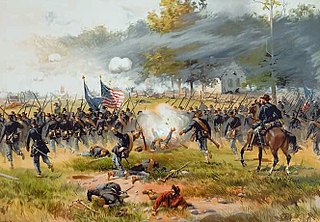 W
WThe 125th Pennsylvania Infantry volunteered during the American Civil War and served a 9-month term from August 1862 to May 1863. It selected the motto In God We Trust. The Regiment fought at the Battle of Antietam under the leadership of Colonel Jacob C. Higgins less than six weeks after being recruited in Blair, Cambria and Huntingdon Counties. The Regiment was noted for its charge through the East Woods, along the Great Cornfield, down Smoketown Road, past the Dunker Church, and into the West Woods. While in formation beyond the Dunker Church in an 'overextended' position, the Regiment repulsed four counterattacks at a price of 229 casualties within 20 minutes. A fifth, heavily reinforced Confederate counterattack forced a retreat with a desperate struggle to retain the Regimental colors. Two weeks before the end of their enlistment, the 125th Pennsylvania also occupied the perimeter of Chancellorsville, Virginia, during the Battle of Chancellorsville.
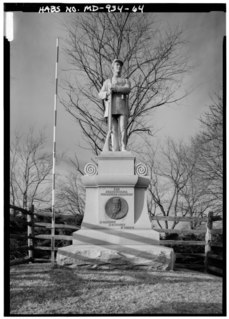 W
WThe 130th Pennsylvania Volunteer Infantry was an infantry regiment that served in the Union Army during the American Civil War.
 W
WThe 133rd Pennsylvania Volunteer Infantry was an infantry regiment that served in the Union Army during the American Civil War.
 W
WThe 145th New York Infantry Regimentt, the "Stanton Legion", was an infantry regiment of the Union Army during the American Civil War.
 W
WThe 151st Pennsylvania Infantry was a Union Army regiment serving for a term of nine months during the American Civil War. The regiment sustained seventy-six percent casualties in the Battle of Gettysburg, its only major engagement. Following the war, it became popularly known as "The Schoolteachers' Regiment" due to the presence of at least sixty teachers in the regiment's ranks.
 W
WThe 172nd Pennsylvania Infantry was an infantry regiment in the Union Army during the American Civil War.
 W
WThe Eastern Iron Brigade, also known as the Iron Brigade of the East and First Iron Brigade, was a brigade of infantry, that served in the Union Army's Army of the Potomac, during the American Civil War. For much of its service, it was designated as the 1st Brigade, 1st Division, I Corps. Among its commanding officers were General John P. Hatch and General Walter Phelps Jr.. Noted for its reliability in battle, the brigade developed a reputation which remained after it was disbanded late in the war, due to its annihilation from extremely high casualties.
 W
WLandis's Missouri Battery, also known as Landis's Company, Missouri Light Artillery, was an artillery battery that served in the Confederate States Army during the early stages of the American Civil War. The battery was formed when Captain John C. Landis recruited men from the Missouri State Guard in late 1861 and early 1862. The battery fielded two 12-pounder Napoleon field guns and two 24-pounder howitzers for much of its existence, and had a highest reported numerical strength of 62 men. After initially serving in the Trans-Mississippi Theater, where it may have fought in the Battle of Pea Ridge, the unit was transferred east of the Mississippi River. The battery saw limited action in 1862 at the Battle of Iuka and at the Second Battle of Corinth.
 W
WThe Union Army Balloon Corps was a branch of the Union Army during the American Civil War, established by presidential appointee Thaddeus S. C. Lowe. It was organized as a civilian operation, which employed a group of prominent American aeronauts and seven specially built, gas-filled balloons to perform aerial reconnaissance on the Confederate States Army.
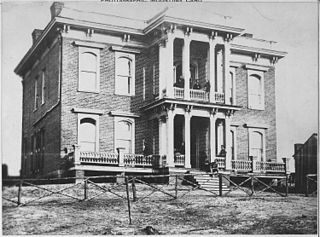 W
WThe U.S. Army Corps of Topographical Engineers was a branch of the United States Army authorized on 4 July 1838. It consisted only of officers who were handpicked from West Point and was used for mapping and the design and construction of federal civil works such as lighthouses and other coastal fortifications and navigational routes. Members included such officers as George Meade, John C. Frémont, Thomas J. Cram and Stephen Long. It was merged with the United States Army Corps of Engineers on 31 March 1863, at which point the Corps of Engineers also assumed the Lakes Survey for the Great Lakes. In the mid-19th century, Corps of Engineers' officers ran Lighthouse Districts in tandem with U.S. Naval officers.